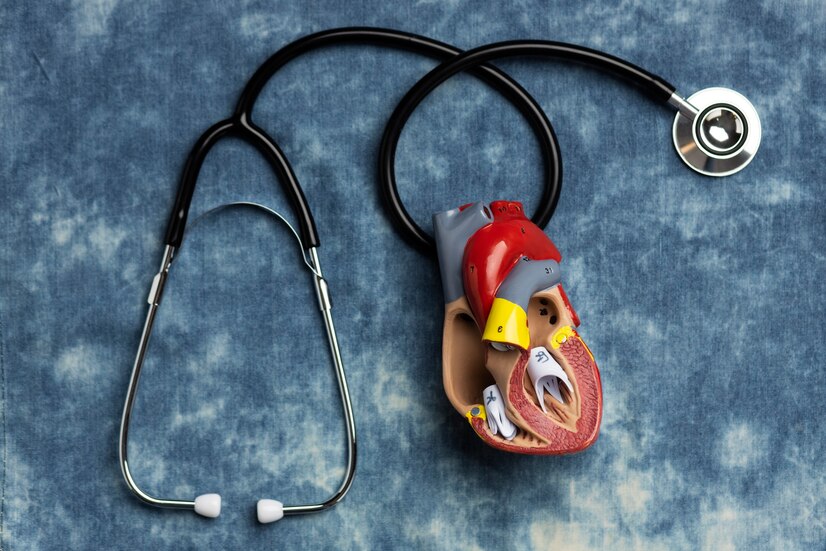Don’t Let Your Heart Skip a Beat Understanding Cardiovascular Disease . Cardiovascular disease (CVD) – it might sound intimidating, but it’s a term for a group of conditions affecting your heart and blood vessels. These conditions, if left unchecked, can significantly impact your life. But the good news is, with a little knowledge and some lifestyle tweaks, you can take charge of your heart health and live a long, fulfilling life.
This blog is your guide to understanding cardiovascular disease. We’ll explore the different types, the risk factors, and most importantly, how to prevent and manage it. So, grab a cup of tea, settle in, and let’s get started on this journey towards a healthier heart!
What is Cardiovascular Disease (CVD)?
Imagine your heart as a tireless pump, constantly working to send oxygen-rich blood throughout your body. Your blood vessels act like highways, carrying this vital fluid to every nook and cranny. Cardiovascular disease disrupts this smooth operation. It can involve:
- Narrowing of arteries: Plaque, a sticky buildup of cholesterol, fat, and other substances, can harden and narrow the arteries. This reduces blood flow to your organs, including the heart.
- Damaged heart valves: These valves ensure blood flows in the right direction within your heart. When they become damaged, blood flow can become inefficient.
- Weakened heart muscle: Over time, various factors can weaken the heart muscle, making it harder for it to pump blood effectively.
The Different Faces of Cardiovascular Disease (CVD)
CVD isn’t a single entity – it encompasses a range of conditions. Here’s a closer look at some common ones:
-
Coronary heart disease (CHD): This happens when plaque buildup restricts blood flow to the heart muscle. This can lead to chest pain (angina), heart attacks, and heart failure.
-
Stroke: When a blood clot blocks or a weakened artery bursts in the brain, it leads to a stroke. Depending on the affected area of the brain, symptoms can vary from weakness or numbness on one side of the body to difficulty speaking or understanding speech.
-
Peripheral arterial disease (PAD): This condition affects the blood vessels in your legs and feet. Plaque buildup can cause pain, cramping, and even sores that don’t heal well.
-
Rheumatic heart disease: This is caused by rheumatic fever, a complication of untreated strep throat. It can damage your heart valves, leading to problems with blood flow.
Who’s at Risk for Cardiovascular Disease (CVD)?
Certain factors increase your chances of developing CVD. These include:
- Age: As you age, your risk of CVD naturally increases.
- Family history: If a close relative has CVD, you’re more susceptible.
- Unhealthy habits: Smoking, excessive alcohol consumption, and a diet high in unhealthy fats and low in fruits and vegetables significantly contribute to CVD risk.
- Physical inactivity: A sedentary lifestyle is a major risk factor.
- Obesity: Carrying excess weight puts a strain on your heart.
- High blood pressure: Uncontrolled high blood pressure damages blood vessels and increases the workload on your heart.
- High cholesterol: High levels of LDL (“bad”) cholesterol can accelerate plaque buildup.
- Diabetes: This condition affects how your body regulates blood sugar, which can damage blood vessels and nerves that control your heart.
Real-life Example:
Imagine Mr. Jones, a 58-year-old man with a family history of heart disease. He smokes, rarely exercises, and enjoys a diet heavy in red meat and fried foods. Mr. Jones has several risk factors for CVD. By making lifestyle changes like quitting smoking, increasing physical activity, and adopting a heart-healthy diet, he can significantly reduce his risk.
Taking Control of Your Heart Health: Prevention is Key!
The good news is that most cases of cardiovascular disease are preventable. Here are some key strategies to keep your heart healthy:
- Eat a heart-healthy diet: Focus on fruits, vegetables, whole grains, and lean protein. Limit saturated and trans fats, salt, and added sugar.
- Maintain a healthy weight: If you’re overweight or obese, losing even a small amount of weight can significantly improve your heart health.
- Get regular exercise: Aim for at least 150 minutes of moderate-intensity exercise or 75 minutes of vigorous-intensity exercise per week.
- Manage stress: Chronic stress can raise your blood pressure and increase your risk of CVD. Find healthy ways to manage stress, such as yoga, meditation, or spending time in nature.
- Don’t smoke: Smoking is one of the leading risk factors for CVD. Quitting smoking is the single best thing you can do for your heart health.
Don’t Let Your Heart Skip a Beat Understanding Cardiovascular Disease
